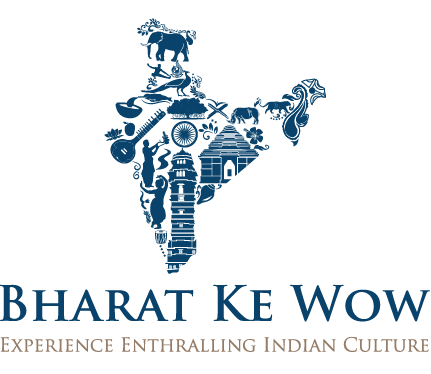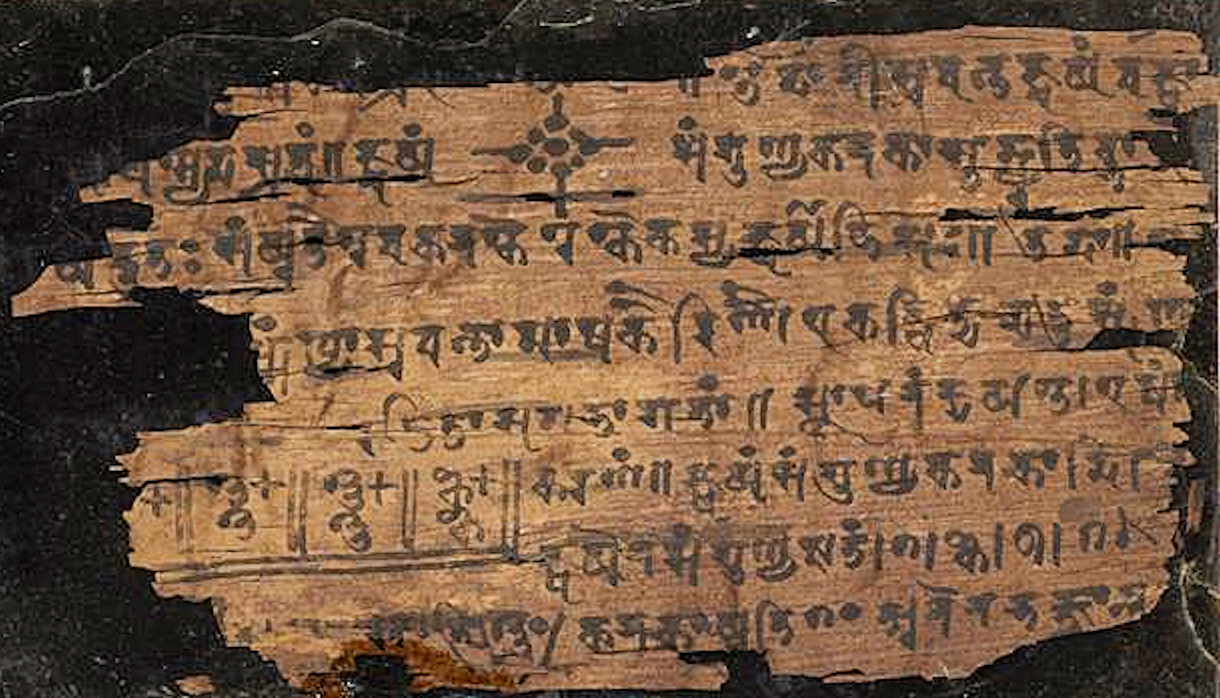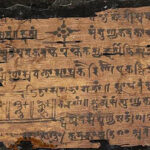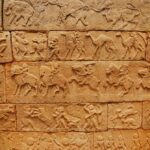The third day of the bright fortnight in the Hindu month of Magha is celebrated as Gauri Tritiya and marks Sharada Divas, a day dedicated to the sacred Sharad script of Kashmir.
The land was known not only for its scenic beauty but also for the towering scholars, unique perspectives on Bharatiya Jnana Parampara and revolutionary ideas. The native script of the region was named after the patron deity, Goddess Sharada, as was the region itself.
Union Finance Minister of India , Nirmala Sitharaman I her 2020 Budget peech in the parliament, read a beautiful poem in Kashmiri language written by poet late Dina Nath Kaul ji written in Sharada script, providing an official, government platform to this forgotten muted identity of Kashmir.
Preserving and propagating ancient Indian scripts, such as the revered Sharda script, is of paramount importance for both scholarly research and cultural heritage conservation. These scripts represent invaluable linguistic artifacts that offer profound insights into India’s rich history, linguistic diversity, and cultural evolution.
The Sharda script, has been historically utilized for writing Sanskrit and Kashmiri languages. Its intricate glyphs and aesthetic appeal make it a subject of fascination for linguists, historians, and cultural enthusiasts alike. However, the usage of the Sharda script declined over the centuries due to various socio-political factors, including linguistic assimilation and the dominance of other demographical entities.
Paleographical studies show that ALL the current scipts in India and even Khmer script of Cambodia and that of a few SE Asian countries have a single origin in Brahmi. While Kharoshti went into disuse a long time back leaving no successors behind, Brahmi evolved into the Proto-Sharada, Siddhamatrka, Telugu-Kannda and the Vatteluttu-Grantha-Tamil scripts and permeated the entire geographical area of Greater India.
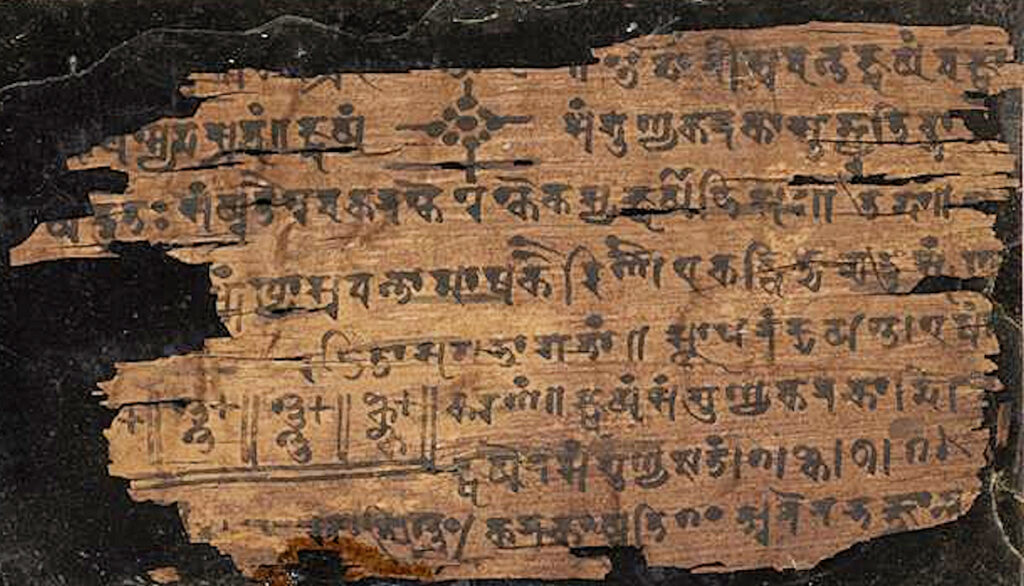
The recent discovery of Carbon dating of Bhaskali Manuscript in Proto-Sharada containing the first ever scriptural representation of Shunya or Zero has pushed its date to almost 3-4th century BCE.
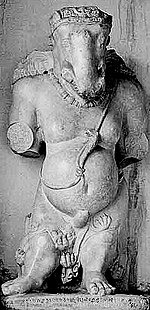
The Gardez Ganesha, a 6th-century marble Ganesha found in Gardez, Afghanistan, now at Dargah Pir Rattan Nath, Kabul is inscribed with the Sharada inscription which says that this “great and beautiful image of Mahāvināyaka” was consecrated by the Shahi King Khingala of Khatriya Country Modern Part of Punjab Pakistan and Afghanistan.
Other records in which the Sharada characters appear are the coins of the Utpala dynasty of Kashmir (9th century) and a brief record incised on the fragment of a broken jar discovered from the precincts of the Avantiswami temple and containing the name of Avantivarma (855-883 A.D.) the founder of the temple. Of about the same date is the Sarahan Prashasti of queen Somaprakha, spouse of Satyaki, a ruling chieftain of Sarahan in ancient Chamba (Himachal Pradesh).
Owing to the antiquity of Sharada and availability of innumerable written records in the form of manuscripts in the script makes it imperative on our part as a community to strengthen the efforts to preserve the Sharda script for several reasons:
Historical Insights: The Sharda script serves as a valuable historical artifact, offering insights into the linguistic and cultural landscape of ancient India, particularly in the Kashmir region. Studying this script can provide crucial data on language evolution, script development, and historical interactions between different linguistic communities.
Cultural Heritage Conservation: Preserving the Sharda script is essential for safeguarding India’s cultural heritage and linguistic diversity. It represents a tangible link to the past, showcasing the literary and intellectual achievements of ancient civilizations and underscoring the continuity of cultural traditions across generations.
To illustrate just one among the several benefits of the preservation efforts, I want to bring to the notice the discovery and edition of an invaluable work from a lone Sharada manuscript, Cittanubodha sastra of Rajanaka Bhaskarakantha who was an erudite scholar. He wrote an elaborate commentary on the great Sanskrit work Yogavasistha, called Mokṣopaya Tika, consisting of one lakh and ten thousand Ślokas, according to his own information. This commentary is still unpublished, and some parts of it are preserved in manuscripts in the Central Library of Banaras Hindu University. Another important work of his is his commentary on the Isvara pratyabhijña Vimarsini. Utpaladeva had himself commented upon his Pratyabhijna Karika in is Laghupratyabhijñāvṛtti and Madhyabhijñāvivṛti, which have come down to us only in fragments. Acarya Abhinavagupta has commented on this work in his Bṛhat pratyabhijña, and in greater detail in his Isvara pratya- bhijna Vimarsini. Even in this certain deeper points were not explained fully, so he composed the Vivṛtivimarsini based on Utpaladeva’s own commentary. Räjänaka Bhaskara- kantha has commented upon the Vimarsini in his Bhaskari.
Besides he has prepared a Sanskrit translation in verse form of the sayings in Kashmiri (Väkh) by the great saint Lalleśvari, published under the title Lallesvarivak.
The last work of Bhaskarakantha was the Cittänubodha sastra. This text consists of about 5000 Ślokas in 15 prakarnas and contains both the philosophy and the practice of Kashmir Saivism. The name itself reveals its content-Ciitta is the faculty of consciousness which enables the human being to reflect and to elevate himself from the limited state of a creature (paśu). It is citta which makes reflection possible, from the ordinary worldly level to the reflection on the nature of the Supreme Reality.
Thus the purport of the Cittänubodhasastra is to awaken the mind and to make it realize the truth of its own nature.
The Sharda script also presents an intriguing subject for linguistic analysis and research. Its unique phonetic features, orthographic conventions, and historical variants offer fertile ground for exploring linguistic typology, script decipherment, and comparative linguistics within the broader Indo-European language family.
Community Identity: Reviving the use of the Sharda script can play a crucial role in reinforcing the cultural identity and linguistic pride of the Kashmiri-speaking community by ushering a sense of belonging and cultural continuity, and empowering it to reclaim their linguistic heritage and preserve their distinct identity in a rapidly changing world.
I wish to narrate briefly a case of cultural pride brought about by the revival of a language in recent times.
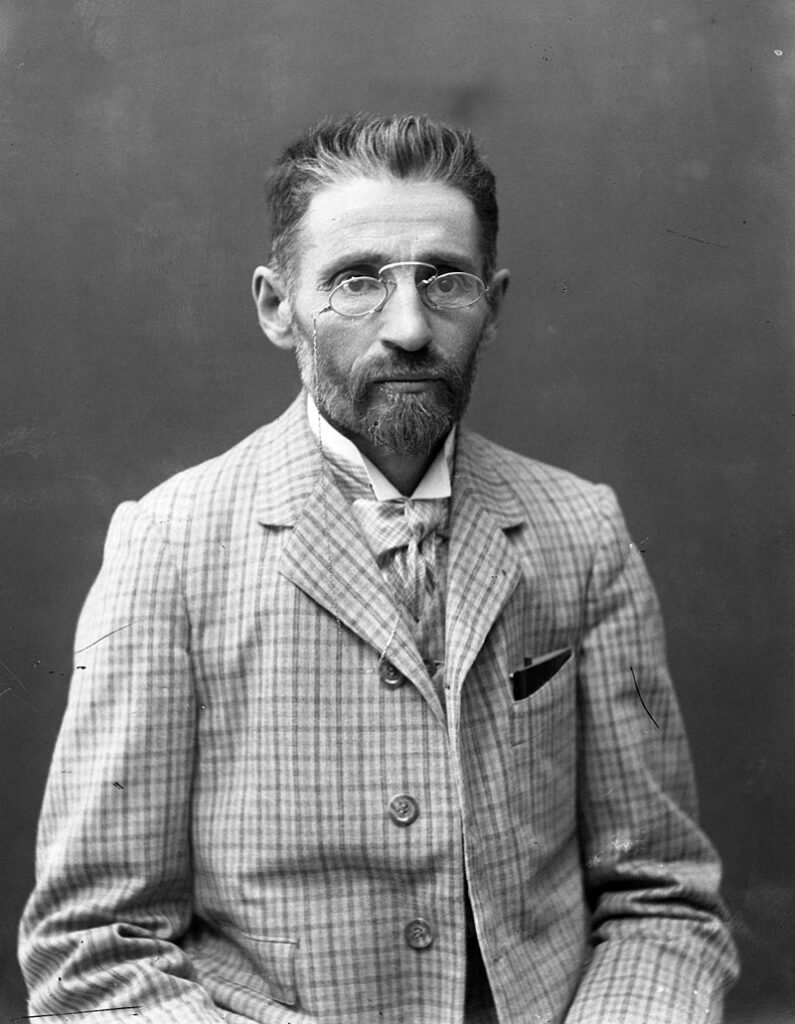
Before Eliezer Ben-Yehuda’s efforts, Hebrew was primarily a sacred and literary language used in religious texts, prayers, and scholarly discourse. It had ceased to be a spoken language in everyday life, having been supplanted by other languages in Jewish communities around the world. Jewish communities in different regions often spoke the dominant languages of their host countries, such as Yiddish in Eastern Europe, Ladino in Sephardic communities, or various local languages in diaspora communities even after migrating from various parts of the world after the newly formed state of Israel.
The situation changed significantly as a result of Ben-Yehuda’s efforts. Ben-Yehuda recognized the importance of Hebrew as a unifying factor for the Jewish people, and he believed that its revival was essential for the cultural and national revitalization of the Jewish community and worked tirelessly to make that vision a reality.
Ben-Yehuda’s efforts led to a resurgence of Hebrew as a spoken and written language. He coined new words and adapted Hebrew to modern needs, expanding its vocabulary to encompass concepts and technologies that did not exist in biblical or classical Hebrew. He founded Hebrew-language newspapers, established schools that taught exclusively in Hebrew, and promoted Hebrew language use within his own family and community.
Today, Hebrew is the official language of the State of Israel and serves as the primary language of communication in all aspects of daily life, including education, government, business, media, and culture. It is spoken by millions of people as their first language and is also widely studied by Jews and even non-Jews around the world.
Preserving the Sharda script is not merely an academic pursuit but a vital endeavor to conserve India’s linguistic heritage, promote cultural diversity, and promote community resilience. By investing in research, education, and digital archiving initiatives, we can ensure that Sharda continues to inspire scholarly inquiry, cultural revival, and intergenerational dialogue, serving as a symbol of India’s cultural resilience and linguistic legacy.


